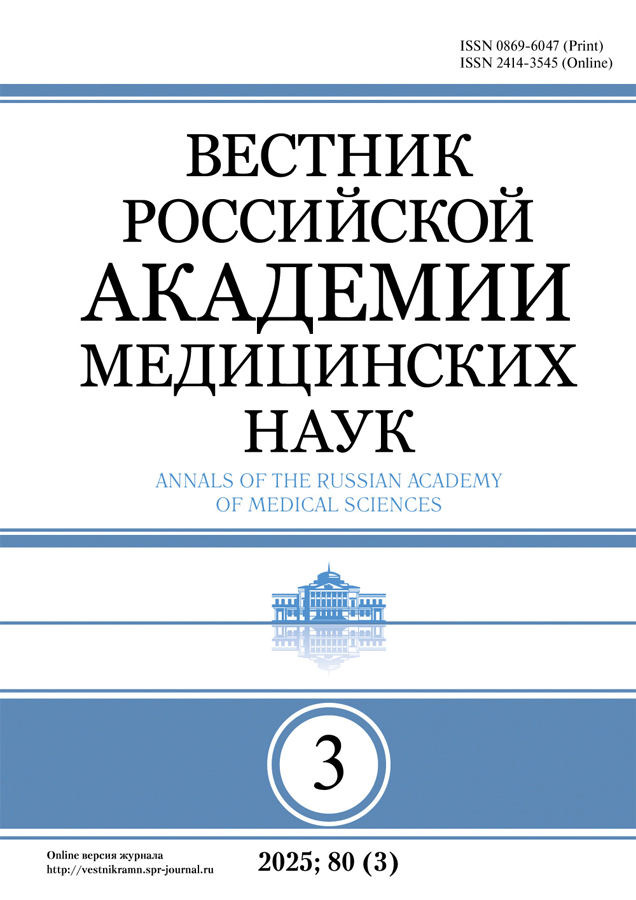MINIMIZATION OF APPROACHES IN LAPAROSCOPIC CHOLECYSTECTOMY
- Authors: Yusif-zade K.R.1
-
Affiliations:
- Military hospital of the Public Border Service of the Republic Azerbaijan, Baku Azerbaijan Medical University, Baku
- Issue: Vol 69, No 9-10 (2014)
- Pages: 140-144
- Section: SHORT MESSAGES
- Published:
- URL: https://vestnikramn.spr-journal.ru/jour/article/view/400
- DOI: https://doi.org/10.15690/vramn.v69i9-10.1143
- ID: 400
Cite item
Abstract
Objective: the aim of the study was to estimate the influence of a number of endoscopic approaches on the effectiveness of laparoscopic cholecystectomy. Methods: retrospective analysis of case histories of 118 patients was applied for the purpose of comparative evaluation of the results of surgical treatment using a three- and four-port laparoscopic approach. Patients were divided into two groups: patients operated using three-port laparoscopic approach (n=60 patients) and patients operated using four-port approach (n=58 patients). One of the important stages of studies was histomorphological characterization of the removed gallbladder, which was performed in all 118 patients who underwent minimally invasive operations. Conventional visual analogue scale of pain (VAS) was used for the subjective assessment of pain syndrome manifestations. Results: 60 patients underwent three-port laparoscopic cholecystectomy (LC) (main group) and 58 patients underwent four-port LC (control group). In the main group, 53 (88.3%) patients showed the absence of any pain, only 3 of them reported mild pain, and 4 – moderate pain, respectively, on the 7th day after surgical intervention. In the control group, these parameters were 50 (86.2%), 2 and 6 subjects, respectively. Terms of hospitalization and disability were relatively lower at the minimal number of ports: 3.2 and 4.4 days, respectively. Disability duration in the main group was 8.5 days versus 10.6 days in the control group. Conclusion: three-port laparoscopic approach technique allows significantly reducing the rate of pain syndrome clinical manifestations, achieving maximal cosmetic effect, and considerably shortening postoperative rehabilitation period, thus resulting in earlier activation of patients and restoration of their working capacity.
About the authors
K. R. Yusif-zade
Military hospital of the Public Border Service of the Republic Azerbaijan, BakuAzerbaijan Medical University, Baku
Author for correspondence.
Email: yusifzadekr@yahoo.com
PhD in Medicine, Head of the Military Hospital of the State Border Service of the Republic of Azerbaijan, Lecturer of surgical diseases sub-department of Azerbaijan Medical University. Address: 99 F. Khoyskoho Str., Аz1072, Baku, tel.: +99 (450) 203-99-38
AzerbaijanReferences
- Kwon A.H., Matsui Y. Laparoscopic cholecystectomy in patients aged 80 year and over. World J. Surg. 2006; 30: 1204–1210.
- Litwin D.E., Cahan M.A. Laparoscopic cholecystectomy. Surg. Clin. North Am. 2008; 88 (6): 1295–1313.
- Livingston E.H., Rege R.V. A nationwide study of conversion from laparoscopic to open cholecystectomy. Am. J. Surg. 2004; 188: 205–211.
- Старков Ю.Г., Фёдоров А.В., Шишин К.В. Минимизация доступа в минимально инвазивной хирургии — тенденция или необходимость. Эндоскопическая хирургия. 2010; 2: 125– 126.
- Шевела А.И., Анищенко В.В., Гмыза С.В. Идеальный доступ для холецистэктомии: NOTES, SILS или все-таки классическая лапароскопия? Эндоскопическая хирургия. 2012; 1: 15–19.
- Шумкина Л.В., Старков Ю.Г. Хирургия единого лапароскопического доступа: современные тенденции в лечении холе-цистита. Эндоскопическая хирургия. 2014; 1: 58–62.
- Poon C.M., Chan K.W., Lee D.W., Chan K.C., Ko C.W., Cheung H.Y. et al. Two-port versus four-port laparoscopic cholecystectomy. Surg. Endosc. 2003; 17 (10): 1624– 1627.
- Trichak S. Three-port vs standard four-port laparoscopic cholecystectomy. Surg. Endosc. 2003; 17 (9): 1434–1436.
- Sun H., Tang H., Jiang S., Zeng Li., Chen E.Q., Zhou Y., Wang Y.J. Gender and metabolic differences of gallstone diseases. World J. Gastroenterol. 2009; 15 (15): 1886–1891.
- Huskisson E.C. Measurement of pain. Lancet. 1974; 2 (7889): 1127–1131.
- Никитина М.Н., Пиманов С.И., Луд Н.Г. Ультразвуковая диагностика полипов желчного пузыря. Инструкция по применению. Витебск. 2008. 17 с.
- Sun S., Yang K., Gao M., He X., Tian J., Ma B. Three-port versus four-port laparoscopic cholecystectomy: meta-analysis of random-ized clinical trials. World J. Surg. 2009; 33: 1904–1908.
- Kurpiewski W., Pesta W., Kowalczyk M., Głowacki L., Juśkiewicz W., Szynkarczuk R. et al. The outcomes of SILS cholecystectomy in comparison with classic four-trocar laparoscopic cholecystectomy. Videosurgery Miniinv. 2012; 7: 286–293.
- Gurusamy K.S., Samraj K., Ramamoorthy R., Farouk M., Fusai G., Davidson B.R. Miniport versus standard ports for laparoscopic cholecystectomy. Cochrane Database Syst. Rev. 2010; CD006804.
- Tuveri M., Tuveri A. Laparoscopic cholecystectomy: Complications and conversions with the 3-trocar technique: 10-year review. JSLS. 2007; 17: 380–384.
- Hashimoto D., Hirota M., Yagi Y., Baba H. Umbilicus saving three-port laparoscopic cholecystectomy. WebMedCentral: Laparoscopy. 2011; 2: WMC001882.
Supplementary files








